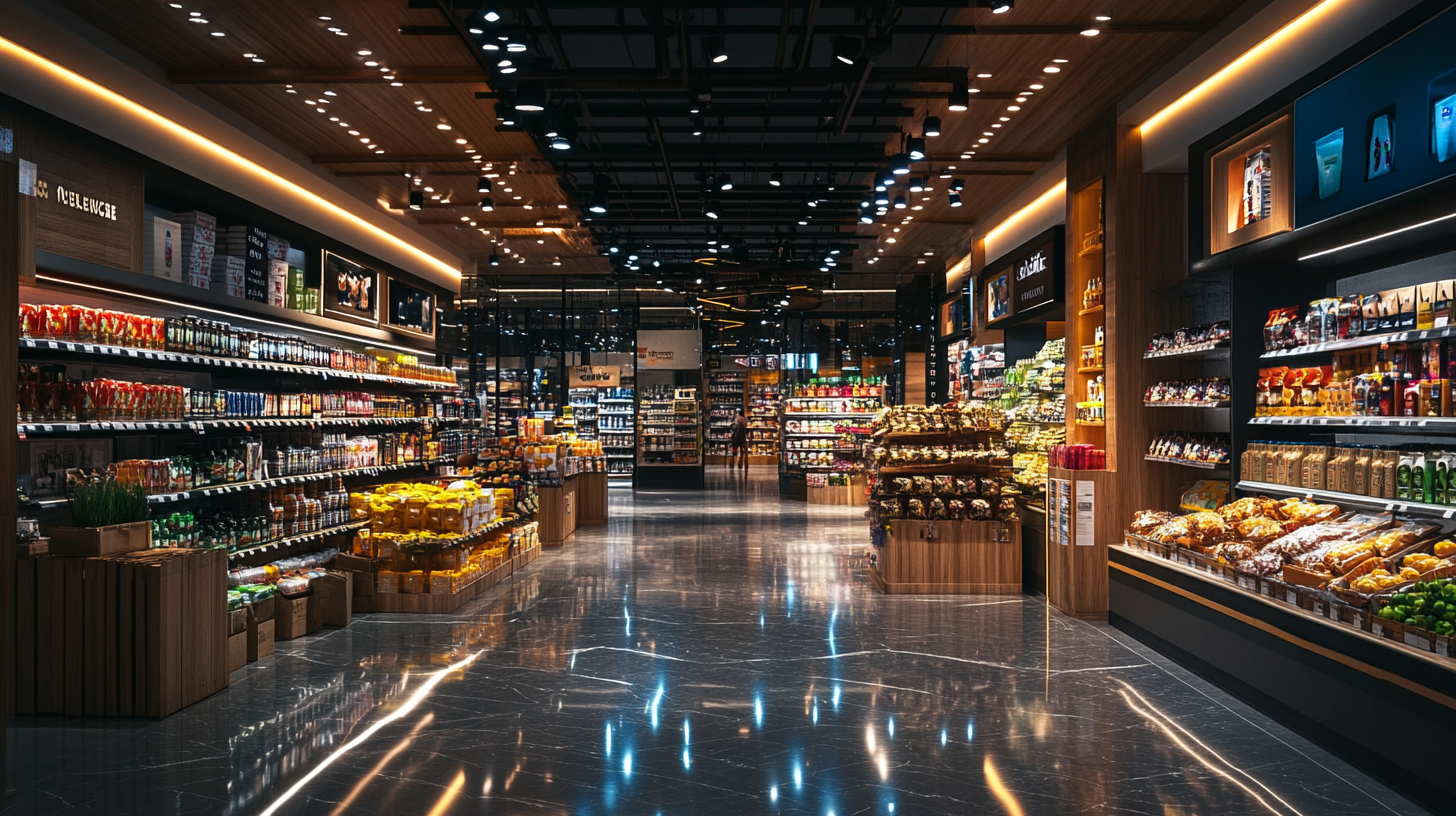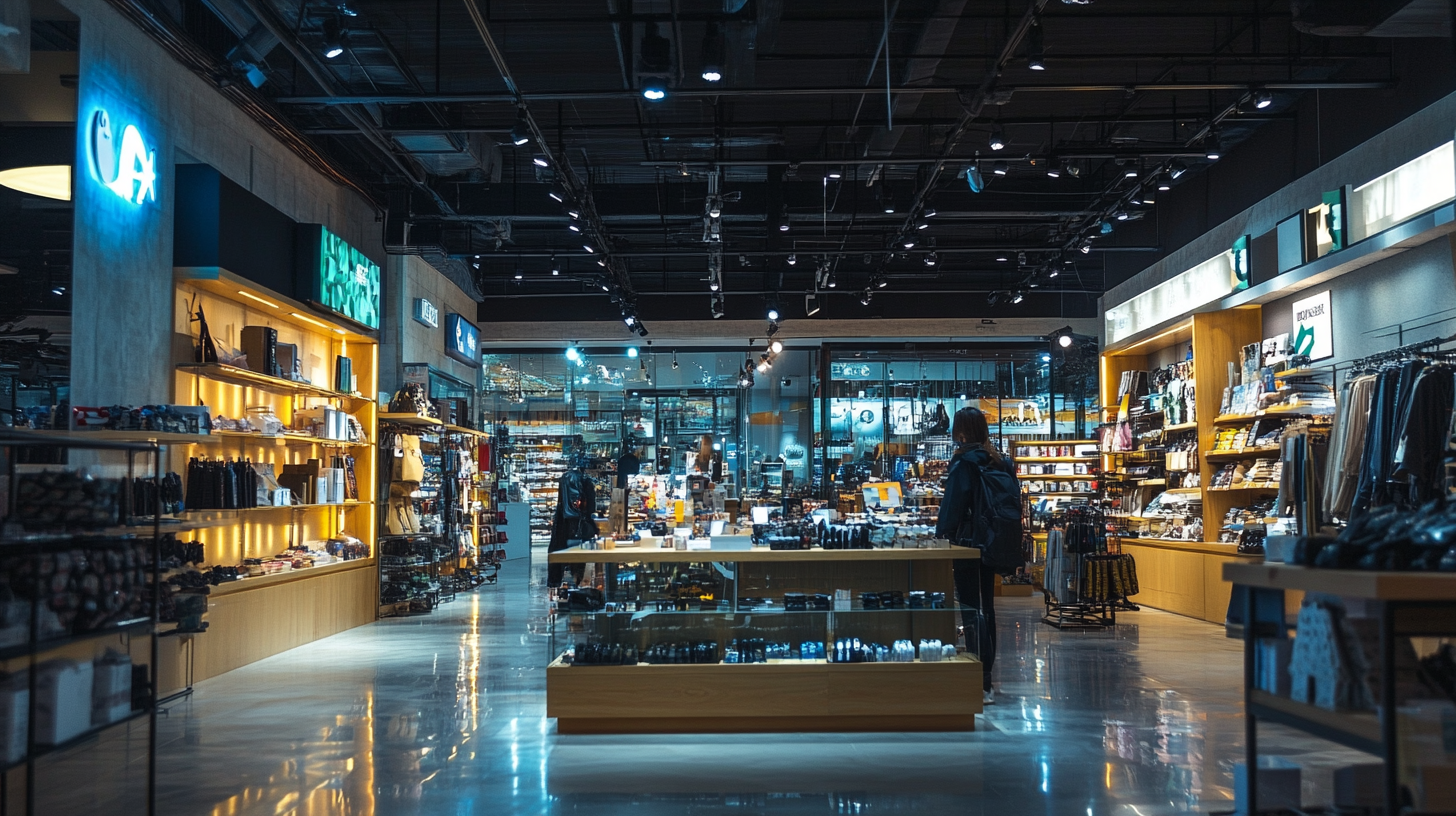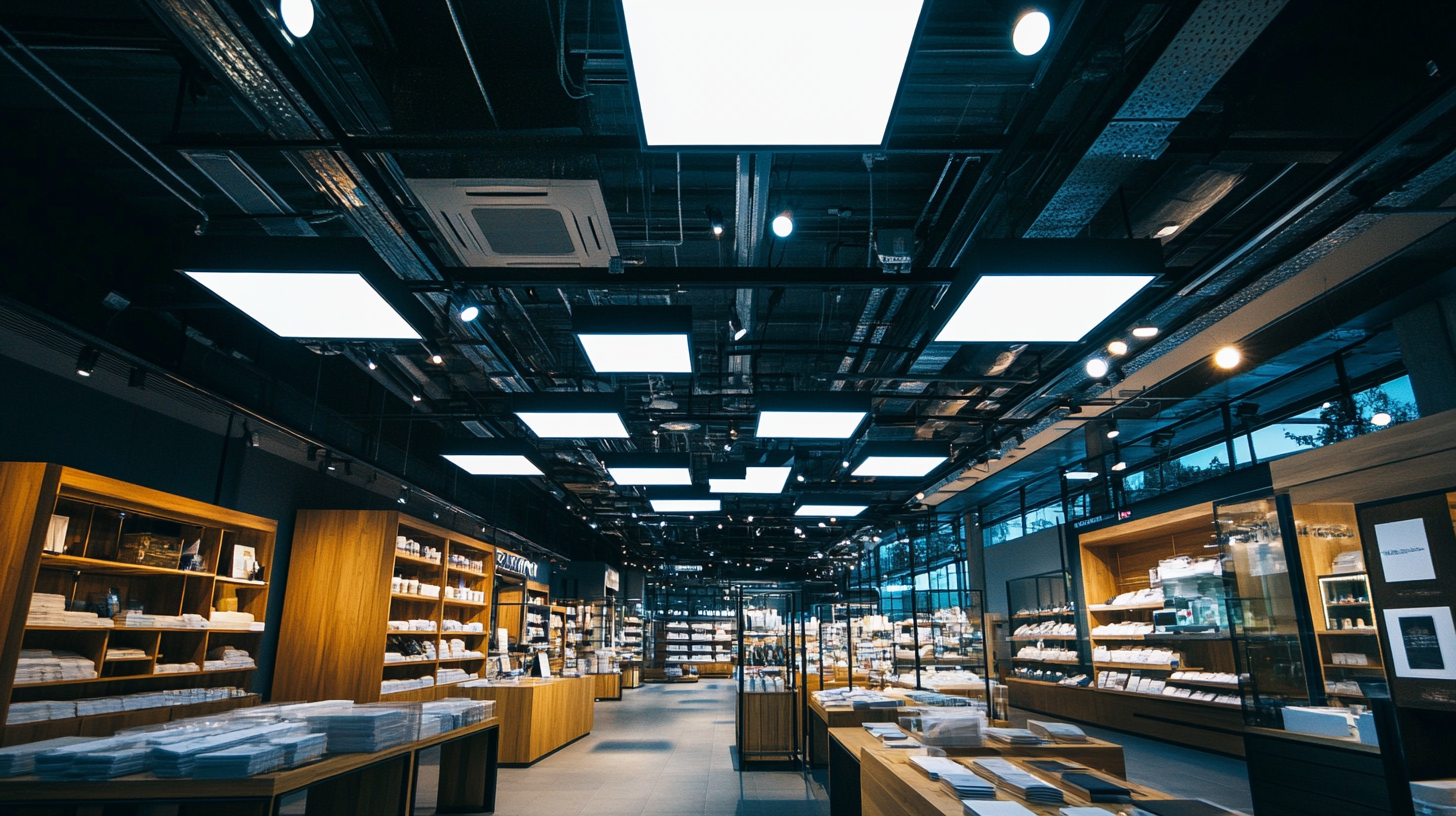Edison LED Lighting
Projects
Ultimate Guide to Enhancing Retail Efficiency with Shop Lighting Strategies
The most vital element for successful survivability in the volatile landscape of retail is optimization of operational efficiency. The most effective ways to improve efficiency in retail stores, however, are smart shop lighting solutions. According to a study by the Retail Industry Leaders Association, nearly 70% of actual consumers are influenced by store lighting in terms of the purchasing decision. According to the American Lighting Association, proper lighting increases sales by even 20%. All this shows how lighting conditions are incisively linked to consumer behavior and overall retail performances.
But energy-efficient lighting improves the shopping experience and cuts down on overheads. According to the U.S. Department of Energy, retail businesses could reduce their energy bills by 30-50% through energy-efficient lighting. This strong data shows that it is very important for lights in shops to create warm environments without restraining operational efficiency and profitability. This guide will highlight successful strategies of shop lighting and how they create such impressive effects on retail.

Principles of Effective Retail Lighting Design
Retail lighting design has a vital role to play in shaping consumer experience as well as enhancing sales within a retail setting. So industry reports released recently have said that according to them, a well-designed lighting can increase up to 30 percent engagement by the customers showing just how serious the effects of positioning and intensity leave for lighting. The principles of effective retail lighting design rest around these three: Functionality, Aesthetics, and Ambiance. Functional include areas of the store well lit for a product to be best displayed. For instance, you can use directional lighting for special promos or seasonal highlighting. According to the survey now being done, about 70 percent of shoppers said they were likely to investigate a store more thoroughly if the items were brightly lit and clearly on display, thus feeding foot traffic and increasing sales conversion rates. Aesthetics come into great import as regards retail lighting because the same combination of different light sources and colors may change the perception of brand and product. Successful brands are also placing increased emphasis on developing such unique moods through specialized lighting designs. The new flagship stores seek innovative lighting schemes that enhance their architectural features and at the same time promote brand identity. Smart lighting solutions serve an energy efficiency purpose, but they can also dynamically adjust to improve the in-store experience of technology-savvy consumers. Ambiance-the characteristic mood which is created as a result of the lighting also has a strong effect on behavior-they will likely not be buying. Warm lighting will present a cosier environment to induce people to stay inside longer. Research states that ambient light can have a 20 percent increase in the probability of a customer buying something. The best adaptation of these principles for illuminating effective design would fuel retail efficacy for all future brands moving towards success in business.

How Different Lighting Types Impact Customer Experience
Integrated lighting strategies form the backbone of customer experience in retail environments. Different types of lighting can drastically alter customers' perceptions of products as well as their navigation through the store. For instance, ambient light encourages a welcoming setting and would enhance the shopping experience, whereas task lights directed toward specific products serve the purpose of inducing a buying mood. Recent market trends show that integrating smart technology with lighting systems is becoming a fast-moving trend, as customers are now able to control lighting through mobile applications and smart home systems. Industry reports state that this transition to smart lighting improves convenience for the end user and also provides engagement opportunities that lay the groundwork for an interactive shopping experience.
Expected high-end lighting markets, including projections for expanding to share further market through lighting tech evolution. By 2032, the market will show values hinting at more consumer affinities for customized lighting solutions in retail. The types of light that are gaining popularity among retailers are LED and smart lighting system units because of their energy performance and dynamic environments that change according to time and customer choice. This flexibility allows retailers to enhance customer experiences with moods tailored to different shopping times.
The nail lamp segment is highly prospering, fueled by the widespread acceptance of gel nail polishes. A CAGR of approximately 4.7% from 2024 to 2032 gives an excellent example of how specific lighting technologies influence niche retail markets. Special lighting creates visibility for products coupled with an ambience attractive enough to make the customers want to linger in a store, hence increasing sales. Every lighting tactic acts toward a complete customer experience-thus, thoughtful design matters in retail.

Strategies for Using Color and Brightness to Enhance Shopping
Lighting is fundamentally important in retail environments, seen as exerting influence over customer perceptions and shopping behavior. The use of color and brightness to attract shoppers is just as important as providing aesthetic pleasure to the store. Warm color tones create an inviting atmosphere that encourages exploration, while cooler tones can lend sophistication to luxury goods.
Besides colors, levels of brightness are used to create feelings and guide customers around different areas of the store. Bright lighting creates an energetic shopping experience, whereas soft lighting in retailers provides comfort and encourages long stays in such areas as cafes and lounges. Adjustable lighting also lets retailers create adaptable environments that may change with different times of the day or occasions for shopping.
Emerging technologies will continue to provide retailers with creative tools for elaborate lighting displays. Innovations in display technologies, such as RGB LED systems, can brighten colors in such a way as to improve product visibility and set a tone for the shopping experience. Effective use of light as a strategic variable could, therefore, yield a greater retail profitability and an enhanced experience for the customers in an era where retail competition is becoming fiercer.

Cost-Effective Solutions for Implementing Shop Lighting
Impressive store lighting can beautify a retail environment while heavily affecting customer behavior. The right choice of cost-effective lighting can improve retail operations significantly without stepping over the budget. One way is to use LED lights that are energy-efficient and long-lasting. By replacing those traditional incandescent bulbs with LED lights, retailers would be minimizing their energy costs and maintenance, which means more profit for them.
Alternatively, lighting can be layered with ambient, task, and accent lighting. This creates a versatile atmosphere that adapts depending on the area within the store. Warm ambient lighting can create a moody atmosphere in the clothing section, while fitting rooms should be brightly lit, ensuring customers see their outfits clearly. Accent lighting can highlight certain products: sale items or new arrivals-being an effective way to guide customers through the store.
Increased cost-effectiveness can also be achieved through smart lighting systems. These systems enable retailers to modify lighting according to time of day or customer traffic patterns, maximizing energy savings. This could even involve dimming lights during slow hours and brightening them when traffic is high, allowing store owners to keep their stores lit up while avoiding expending energy unnecessarily. These smart lighting techniques not only assist with operational efficiency but also enhance the entire shopping experience.
Analyzing the ROI of Optimized Retail Lighting Systems
Retail lighting entails more than just illumination; it greatly affects customer perception and buying behavior. In cases with optimized lighting strategy, businesses report enhanced profit on investment (ROI). It acts on the visibility of the product, a sense of the ambiance, and affects sales. Retailers can, therefore, use lighting in such a way as to offer directions to shoppers in their purchasing behavior, highlighting specific areas or products.
ROI ought to factor in the direct benefits and indirect benefits of optimized retail lighting systems. Better lighting means better footfall and dwell time, which translates to better sales. Studies have shown that there is an increase in sales of up to 30% for displays that are well lit. Apart from benefitting sales margins, energy-efficient lighting tools such as LEDs will benefit the return on investment simply by lowering energy costs. Investing in smart lighting systems will further maximize on the benefits, dimming or brightening depending on the customer presence and time.
Moreover, color temperature and lighting design can affect the psychological faculties of moods and customer engagement. Warm colors might be applied to create an inviting atmosphere for apparel stores, while brighter, cooler lights might help enhance perception of cleanliness in grocery stores. As retailers grow increasingly conscious of the psychological impact of lighting on consumer behavior, they are discovering that a well-planned lighting scheme is not an aesthetic accessory but rather a very real and significant contributor to the health of their business.
